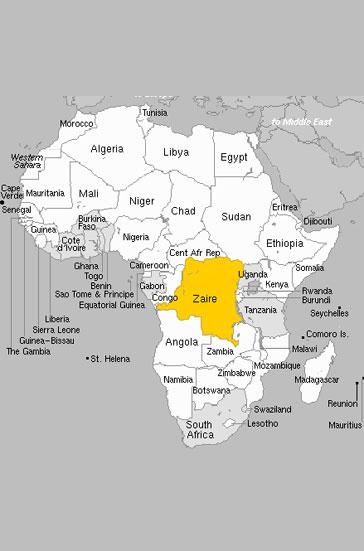Origins of the Mangbetu

The Mangbetu occupy the Uele river area in the Northeastern part of the Democratic Republic of Congo (formally Zaire). Archaeological evidence shows iron smelting in the area since 2300 B.C.E., but the Mangbetu, coming from drier lands around present-day Uganda, did not arrive until about 1000 C.E. Through both conflict and cooperation, they exchanged cultural traditions with other societies of the area: Bantu-speaking peoples such as the Buda, Bua, and Lese, and Ubangian-speaking peoples such as the Azande, Bangba, and Barambo. Around 1800, a number of small chiefdoms were consolidated into the first Mangbetu kingdom. Although this only lasted two generations, a tradition of courtly prestige continued even in small villages and spread to many of the Mangbetu's trading partners. This combination of cultural diversity, exchange, and prestige resulted in a thriving artistic tradition.

At left, we see the decorative end of an ivory hatpin. It shows four faces, each getting smaller as you go up. But it is not just a change in scale. There is a precise geometric pattern underlying this sculpture. Can you discover its secret?
Here is a hint. A similar design theme was used to create the Mangbetu style of personal adornment. The photo on the lower left shows a Mangbetu hair style, popular during the time that this carving was created (about 1914). The chief is wearing an ivory arrow pin that points along the horizontal (0 degrees). He has another ivory pin ending in a disk that is at 135 degrees from the arrow pin. The top knot in his hat is at 90 degrees from the disk pin. What do 90 degrees and 135 degrees have in common?
